News
Five soil projects at the forefront of research and sustainable development
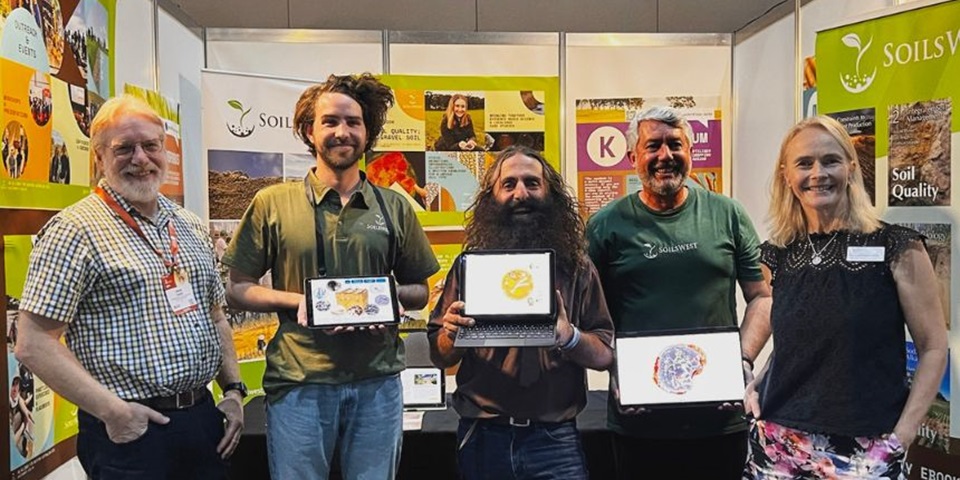
Soil champion and Gardening Australia’s Costa Georgiadis (centre) was amazed by the work of SoilsWest and its collaborators.
“We often take what lies beneath our feet for granted,” said Soil Science Australia president Ed Scott at the National Soil Science Conference in Darwin last week. But Murdoch University and SoilsWest scientists are not so care-free.
Here are five projects where our innovation and passion for soil is creating real change...
How low can you go?
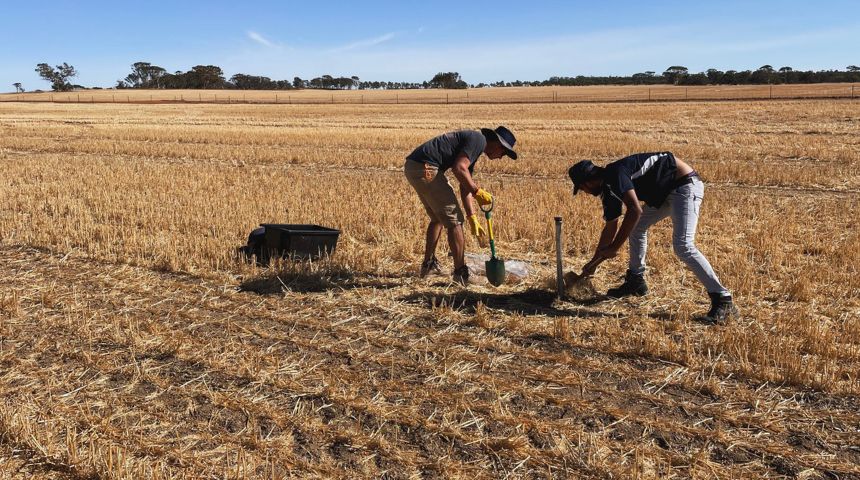
Sampling soil for nutrient analysis at a farm in the Western Australian wheatbelt.
Digging can be tiring.
It’s one of the many reasons why so much of what we know about soil is limited to only the first 10cm below the surface.
Although this ‘topsoil’ is where a lot of important biological, chemical and physical interactions take place, there’s also a lot going on as you dig deeper into ‘subsoils’.
“Subsoils can be the new frontier,” said Richard Bell, Professor of Sustainable Land Management.
Professor Bell has spent his entire career improving the sustainability of farming in Western Australia and Asia.
His collaborative and community-driven mindset was recognised in Darwin having been awarded the JA Prescott Medal for his contribution to conservation agriculture.
“Other countries are looking to Australia for subsoil research - we’ve got a lot to offer,” he said.
One person’s trash is another’s treasure
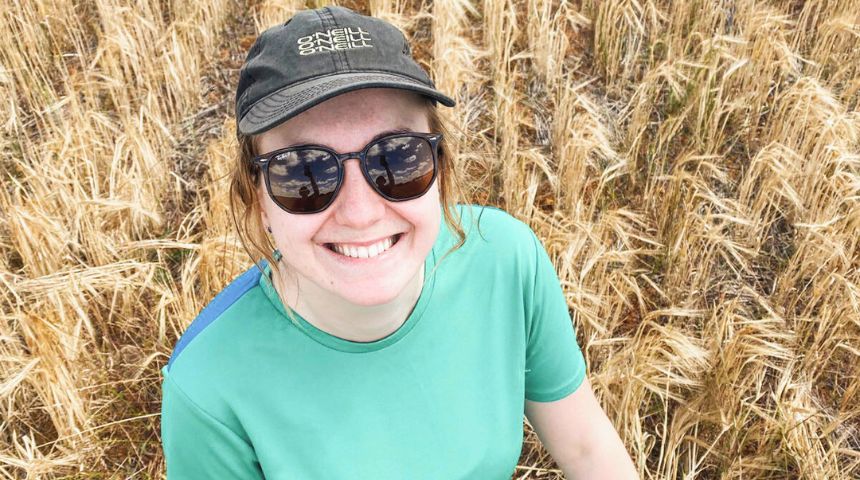
Murdoch University and SoilsWest postdoctoral researcher and ebook lead author Francesca Brailsford.
When collecting soil samples, a sieve is often used to get rid of gravel.
But Dr Francesca Brailsford’s research is showing us that a better understanding of gravel may be critical to overcoming many of the barriers farmers face when growing crops on this soil type.
“Gravel soil is known to present challenges with water and nutrient availability, which can limit yields,” said Dr Brailsford.
“Our research first focused on why we see these problems and is now focused on management strategies to improve crop yields,” she said.
Her new discoveries have been captured and synthesised with historical knowledge in a new freely-available and highly interactive ebook - Soil Quality: 9 Gravel Soil.
“It’s exciting to finally put this information into the hands of growers, industry and the soil science community, particularly new findings from the last four years of research with valuable insights from experts in the field,” she said.
Puddle purging
Murdoch University PhD student Maria Then with her poster in Darwin.
Have you ever noticed water pooling on top of your garden soil or in mud puddles after a big downpour?
This waterlogging is also called soil water repellency, and its one of the biggest constraints farmers have to manage.
If the water stays on the surface the plant’s roots are unable to take it up to reach its growth potential.
But PhD student Maria Then is fusing new technologies like near-infrared spectroscopy, gamma radiometry and electromagnetic induction to develop solutions.
“Water repellency is such a prevalent issue in Western Australia and South Australia - I want farmers to know that there is a method out there, which is what I’m working on, to ameliorate soil water repellency on sandy soils at a much cheaper rate than what they’re doing now,” she said.
Improving farmers’ livelihoods and land resilience
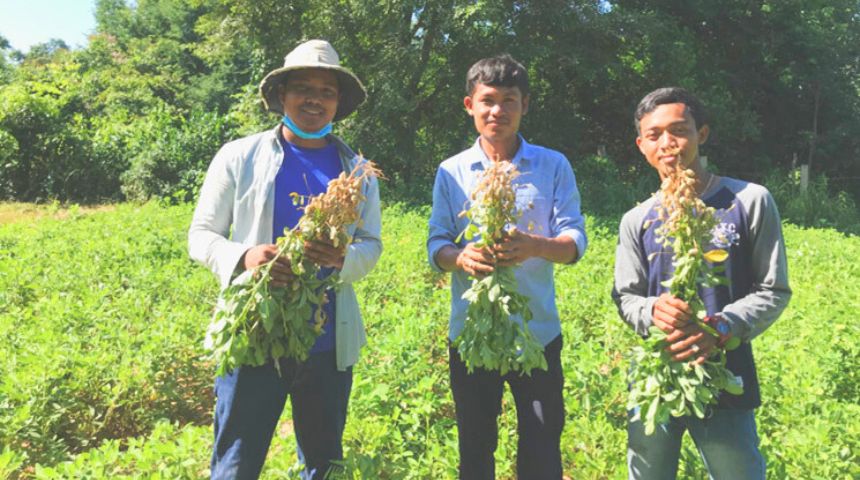
Farmers and project collaborators in Cambodia with their improved peanut plants.
Plants need a diversity of nutrients to be able to grow to a level where they can sustainably produce food and be of value to communities.
But in the upland parts of Cambodia the land conditions often mean crops can’t get all they need from the soil alone.
Dr Wendy Vance is part of a team demonstrating to farmers in the region how they can use fertiliser efficiently and sustainably to improve their farms.
“We always ask how can we get more impact,” she said.
“We’re working with farmers to show that for a very small amount of fertiliser and a very small cost they are able to improve production and profit by up to 50 percent.
What are dreams made of?
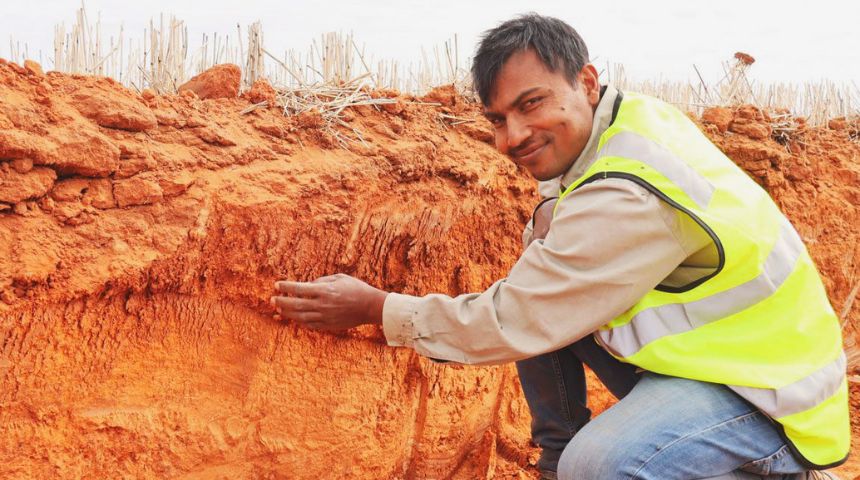
DPIRD research scientist and Murdoch University Associate Professor Dr Gaus Azam.
For Associate Professor Gaus Azam, they’re made of soil.
Dr Azam leads a collaborative project that looks at the myriad of issues farmers face in their soil, from acidity to compaction to low surface area, and then re-engineers the soil profile in their absence.
This blue-sky research is about discovering the maximum potential of crops grown on unconstrained soil to find out what is really possible.
It’s delivering some very impressive results - almost doubling the crop yield and water use efficiency that most farmers are used to.
Although the project is partly a proof-of-concept, its promise has generated excitement real excitement from local farmers including those who helped with the trials.
“The dreams can actually come true when re-engineering,” Dr Azam said.
“There is so much opportunity to work together - with carbon [scientists], with water [scientists] - we can put it all together for the next five or 10 years and ask, how can we get there?”
Check out this video of soil reengineering in action in the WA wheatbelt.
Based at Murdoch University, SoilsWest digs a little deeper to identify and connect soil scientists and partnering organisations to a range of different skills, opportunities and capability for the delivery of more integrated soil research in Western Australia.
News
Five soil projects at the forefront of research and sustainable development
Posted on
Topics